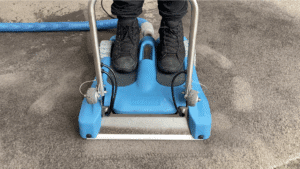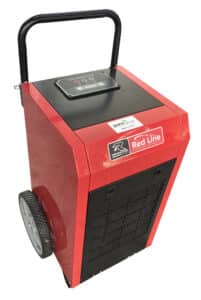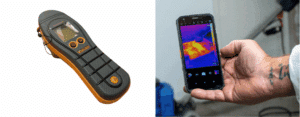Whether caused by a burst pipe, torrential downpour, or hidden leak, water damage can wreak havoc on your property. In Auckland, where storms and flooding are not uncommon, quick and professional action is vital. Many homeowners and property managers search for “water damage restoration services near me” in the hope of finding fast, reliable support.
But beyond drying out carpets and cleaning up, did you know that professional Auckland flood restoration services / companies are not only equipped to handle emergencies—they’re essential in preventing long-term problems that can impact both your property and health.
In this blog, we’ll explore how expert water damage water damage restoration services in Auckland help you avoid lingering issues well after the water is gone.
Immediate Water Extraction Stops Further Damage in Its Tracks
The first and most crucial step in water damage restoration is water removal. If water is left to sit—even for just a few hours—it can begin to soak into flooring, subfloors, and drywall, causing materials to warp, swell, or rot.
Professional flood restoration companies in Auckland use industrial-grade vacuums, pumps, and moisture meters to extract standing water fast. This rapid response is essential for preventing:
- Mould growth
- Deterioration of timber framing
- Weakening of structural foundations
Why it matters: The longer water sits, the deeper it penetrates into structural materials. Quick extraction is the best way to limit costly damage and long-term repairs.

Dehumidification Prevents Hidden Moisture Buildup
Even after visible water is removed, moisture remains trapped in walls, floors, insulation, and air cavities. Professional restoration teams follow up extraction with advanced drying using:
- High-powered dehumidifiers
- Air movers and circulation systems
- Thermal imaging to identify hidden wet spots
This phase often takes several days but is essential to avoid hidden damage like wood rot, corrosion in metal framing, and the dreaded black mould.
Why it matters: Simply drying what you can see isn’t enough. True flood restoration requires drying what you can’t see as well.

Mould Prevention Protects Structural and Human Health
A damp environment is a breeding ground for mould spores, which can grow within 24–48 hours of water exposure. In Auckland’s humid climate, this risk is heightened.
Mould doesn’t just pose health risks—it breaks down organic building materials like wood and plaster. Over time, unchecked mould infestations can weaken beams, ceilings, and walls.
Restoration services include:
- Antimicrobial treatments
- HEPA vacuuming and air filtration
- Removal of contaminated materials when necessary
Why it matters: Preventing mould growth protects both your property’s structure and the health of its occupants.
Property Inspections Detect E.coli and Other Health Hazards
When it comes to water damage—especially floodwater—contamination is a serious concern. Dirty water can contain a wide range of pathogens, including E.coli, which poses significant health risks to anyone living or working in the affected space.
Rather than only looking for visible damage, professional restoration services in Auckland carry out comprehensive property inspections to assess:
- Which areas have come into contact with potentially contaminated water
- The presence of bacteria such as E.coli through swab testing or microbial assessments
- Risks to soft furnishings, HVAC systems, or insulation where bacteria can linger
These inspections ensure that no corner of your home is left unchecked, helping to create a safe, sanitised environment before anyone reoccupies the space.
Why it matters: Even if a property looks clean and dry, harmful bacteria like E.coli can remain on surfaces and in materials, posing hidden health hazards without proper inspection and treatment.
Restoration of Building Materials Prevents Full Rebuilds
Instead of tearing everything out, top-tier water damage restoration services aim to restore wherever possible. For instance:
- Floorboards may be dried, sanded, and resealed rather than replaced.
- Gib boards can be partially removed and patched instead of re-sheeting entire walls.
- Carpet may be salvaged using hot water extraction and antimicrobial treatments.
This saves money, reduces waste, and prevents the need for more invasive work later.
Why it matters: Restoration is often more cost-effective and environmentally friendly than replacement. Done correctly, it also preserves structural integrity.
Proper Documentation for Insurance Prevents Delays in Repairs
Many property owners in Auckland are insured for flood and water damage, but without proper documentation, claims can be delayed or denied. A reputable restoration company provides:
- Moisture level readings
- Photos of affected areas
- Reports on work completed
- Damage assessments
This paperwork is vital for securing approval for repairs that affect structural components like floors, ceilings, and support walls.
Why it matters: Insurance can cover structural repair costs, but only if evidence of damage and restoration is provided.
Sewage and Contaminated Water Removal Eliminates E.coli Risk
Floodwaters—especially those involving sewage overflows or storm runoff—often carry dangerous pathogens, with E.coli being one of the most common and harmful. Exposure to such bacteria can lead to gastrointestinal illness, skin infections, and respiratory issues.
Professional water damage restoration teams in Auckland are equipped to handle contaminated water safely. This includes:
- Using commercial-grade disinfectants proven to kill E.coli and other bacteria
- Removing and disposing of affected materials that can’t be sanitised
- Sanitising surfaces, subfloors, and cavities where bacteria may have spread
Restoration professionals also wear protective gear and follow strict decontamination protocols to prevent cross-contamination in your home.
Why it matters: Cleaning up floodwater isn’t just about aesthetics—it’s about protecting your family or tenants from serious health threats like E.coli exposure.
Prevention Advice for Future Resilience
The best water damage restoration companies don’t just fix—they educate. After drying, cleaning, and repairs, they often provide advice such as:
- Improving drainage around your property
- Waterproofing basements or foundations
- Installing sump pumps
- Using water-resistant materials in at-risk areas
This proactive approach helps Auckland homeowners and landlords reduce the risk of structural water damage from future floods or plumbing failures.
Why it matters: Prevention is cheaper and easier than cure—especially when it comes to your home’s structural integrity.
Specialised Equipment Detects and Prevents Long-Term Structural Weakness
Modern flood restoration teams come armed with advanced tools such as:
- Infrared cameras
- Hygrometers
- Moisture meters
- Borescopes (to see inside cavities)
This technology allows for a precise understanding of how deep water has penetrated and where damage may be forming—well before visible signs appear.
Why it matters: Advanced detection methods catch problems early, giving you time to act before they become expensive or irreparable.

Peace of Mind That Your Property Is Safe and Sound
At the end of the day, the biggest benefit of using professional water damage restoration services near me is peace of mind. You’ll know that:
- Moisture has been thoroughly removed
- Mould isn’t silently spreading behind your walls
- Structural elements remain strong
- You’re fully covered for any future insurance claims
Don’t settle for just surface drying. Your home or business deserves a proper restoration that safeguards it for years to come.
Frequently Asked Questions (FAQ)
How soon should I call water damage restoration services after a flood?
Immediately. The first 24 to 48 hours are crucial. The faster water is removed, the less chance there is for structural damage or mould growth.
Are water damage restoration services covered by insurance?
Most home insurance policies in New Zealand cover sudden and accidental water damage, such as burst pipes or storm flooding. Check your specific policy and contact your insurer promptly.
Can I do water damage restoration myself?
You can mop up minor spills, but larger flooding or hidden leaks require professional equipment and expertise. DIY methods often miss hidden moisture, leading to long-term problems.
How much does flood restoration in Auckland typically cost?
Costs vary depending on the extent of the damage and the services required. Minor jobs may start at a few hundred dollars, while extensive flood damage involving structural repair can run into the thousands.
How do I find reliable “water damage restoration services near me” in Auckland?
Look for companies with:
- Certified technicians (e.g., IICRC accreditation)
- 24/7 emergency response
- Positive local reviews
- Transparent pricing and insurance support
Final Thoughts
Water damage doesn’t end when the carpet dries. It can hide deep within your walls, floors, and foundation—slowly weakening your home’s structure. That’s why hiring trusted Auckland flood restoration professionals is not just smart, but essential.
If you’re dealing with water damage now, or want to be prepared for the future, start by searching for “water damage restoration services near me”—and choose a team that truly understands the long-term risks.
Your home’s structure depends on it.
